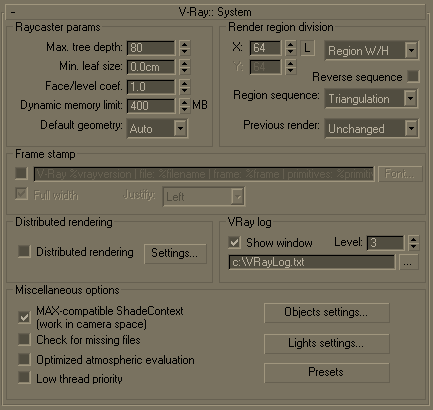
Show last VFB- This toggle opens up the V-Ray frame buffer, by clicking on its button. RGB, Alpha, etc)whilst the rendering is taking place, and after the rendering is finished. The rendering data is what's viewed in the VRF (e.g. Memory frame buffer- When enabled, this option saves/displays all the rendering data into the memory of the Frame buffer. Under V-Ray tab, extend the Frame buffer rollout parameters.Įnable built-in frame buffer- This function uses the VRay frame buffer to render the scene. To open the Render Setup dialog, simply press F10 or click on its icon from the main toolbar. If there's a File Load Mismatch, choose to Adopt the File's Unit Scale. To test some of the parameters being discussed in this chapter, please open the file under the name, Rendering in VRay.max. A lot of emphasis will be put into functionalities such as, Load image, Save all image channels to single file, Save all image channels to separate files, Save current channel, V-Ray image file format, Start interactive rendering, IPR Debug shading, Render, Isolate Selected, Render History settings, Region Controls, Layers, Lens Effects, LightMix, Film tonemap, Hue/Saturation, Lookup Table, Stats, and much more.
Vray distributed rendering full#
In the V-Ray Frame Buffer section, users will have a full understanding of how the VFB new parameters work. In this chapter, users will be taken through key V-Ray render setup parameters such as, Frame buffer, Global switches, IPR options, Image sampler (Antialiasing), Bucket image sampler, Progressive image sampler, Image filter, Global DMC, Environment, Color mapping, Global illumination, Brute force GI, Light cache, Color management, Distributed rendering, System, Render elements, etc.

I have recently published a New Book with Taylor & Francis/CRC Press, entitled, V-Ray 5 for 3ds Max 2020: 3D Rendering Workflows


 0 kommentar(er)
0 kommentar(er)
